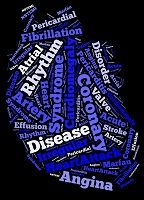Article
Angina in Women Linked to Abnormal Heart Blood Flow
Author(s):
Heart disease presents differently in women, and a drug for angina that works for most men did not help most women with their angina, researchers reported today.

Ranolozine (Ranexa/Gilead), a drug often prescribed for angina, was ineffective in patients with female-pattern heart disease -- though it had some benefit for the sickest of these patients, researchers said today at the American Heart Association 2015 Scientific Sessions in Orlando, FL.
In a study presented at the meeting and due to be published online today in the European Heart Journal, Noel Bairey Merz, MD, of the Barbra Streisand Women's Heart Center at Cedars-Sinai Heart Institute in Los Angeles, CA, found that the ineffective treatment is a good example of the problems of doing heart research mostly on men.
"For too long, physicians treated women's heart disease the same way the treated heart disease in men," she said.
The study looked at women with microvascular (female-pattern) heart disease, in which cholesterol plaque tends to spread more evenly into thousands of of tiny blood vessels that surround the heart muscle. In men plaque tends to clog the heart's major arteries.
In the study, known as RWISE, 128 coronary microvascular dysfunction patients, 96% of them women, got from 500 to 1,000 mg of ranolazine twice daily, or placebo in a double-blinded study. The patients got the medications for two weeks.
The findings showed that there was no statistically significant difference in angina or blood flow. Other findings showed that change in angina directly correlated with change in heart blood flow, and increase flow m meant less angina pain. A subgroup of patients with severe coronary microvascular dysfunction had significantly less angina along with improved blood flow.
"Although ranolazine was not effective in the general population of coronary microvascular dysfuntion patients we did find that patients with more severe dysfunction did experience some benefit, Bairey Merz said.
In the abstract of the journal article, she noted that "the mechanistic basis of the symptoms and signs of myocardial ischemia in patients without obstructive coronary artery disease and evidence of coronary microvascular dysfunction is unclear." The study results showed that angina and myocardial perfusion changes were related, while both angina and myocardial perfusion improved in subjects with lower coronary flow reserve.





